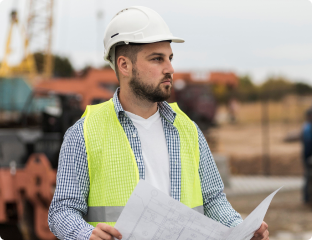Prioritize Your Security with Comprehensive Roofing Safety Guidelines
"*" indicates required fields
Introduction
Roofing projects can be complex and hazardous, requiring strict adherence to safety guidelines to protect workers and ensure successful outcomes. Whether you’re a homeowner undertaking a DIY roofing project or a professional contractor overseeing a construction site, prioritizing safety is paramount. This article will provide comprehensive roofing safety guidelines covering essential practices, equipment, and precautions to mitigate risks and create a secure working environment.
Understanding the Importance of Roofing Safety
Protecting Workers’ Well-being
The primary reason for implementing roofing safety guidelines is to safeguard the well-being of workers. Roofing projects involve working at heights, handling heavy materials, and utilizing various tools and equipment. Employers and workers can significantly reduce the risk of accidents, injuries, and fatalities by prioritizing safety measures. A safe working environment promotes a culture of care and ensures the physical and mental health of the workforce.
Compliance with Legal Regulations
Compliance with safety guidelines and regulations is a legal obligation for roofing contractors and employers. Authorities establish safety standards to protect workers and ensure a secure workplace. By adhering to these regulations, businesses demonstrate their commitment to maintaining a safe environment and avoid penalties and legal consequences associated with non-compliance.
Enhancing Project Efficiency
Safety and efficiency go hand in hand. When workers feel safe and confident in their environment, they can focus on tasks without unnecessary distractions or concerns. Adhering to roofing safety guidelines improves productivity, minimizes delays caused by accidents or injuries, and contributes to the overall success of the roofing project.
Comprehensive Roofing Safety Guidelines
Conduct Thorough Risk Assessments
Before starting any roofing project:
- Conduct a comprehensive risk assessment.
- Identify potential hazards such as unstable surfaces, fragile roofing materials, electrical wires, and nearby power lines.
- Evaluate the weather conditions, including wind speed, rain, or extreme temperatures, as they can impact safety.
A thorough risk assessment allows for effective planning and the implementation of necessary safety measures.
Provide Adequate Training and Education
Proper training and education are crucial for maintaining a safe roofing environment. Make sure that all workers receive appropriate training on roofing safety guidelines, including fall protection, equipment usage, hazard identification, and emergency procedures. Regularly update training programs to address new safety standards and industry best practices. Educate workers on the importance of personal protective equipment (PPE) and ensure its proper usage.
Use Personal Protective Equipment (PPE)
Personal protective equipment is essential for safeguarding workers during roofing projects. Provide and enforce the use of appropriate PPE, including hard hats, safety glasses, gloves, high-visibility vests, and sturdy footwear with slip-resistant soles. Additional protective gear, such as respiratory masks or hearing protection, may be necessary depending on the specific project requirements. Regularly inspect and replace damaged or worn-out PPE.
Ensure Proper Fall Protection
The risk of falls from heights is quite real in roofing work. Implement reliable fall protection measures, such as personal fall arrest systems (PFAS), safety nets, and guardrails. Conduct regular fall protection equipment inspections to ensure it is in good condition and meets safety standards. Train workers on the proper use of fall protection systems and emphasize the importance of staying securely anchored while working at heights.
Secure Ladders and Scaffolding
Ladders and scaffolding play a crucial role in roofing projects, providing access to elevated areas. Ensure that ladders and scaffolds are in good condition, properly secured, and used correctly. Train workers on ladder safety, including proper positioning, weight limits, and maintaining three-point contact. Inspect scaffolding regularly, install guardrails, and ensure a stable foundation on level ground.
Implement Safe Material Handling Practices
Roofing materials can be heavy and awkward to handle. Train workers on proper lifting techniques, including bending at the knees, using mechanical aids when necessary, and avoiding overexertion. Use appropriate lifting equipment for larger and heavier items, such as cranes or hoists. Establish clear communication protocols to coordinate material movement and prevent accidents caused by falling objects.
Stay Aware of Electrical Hazards
Roofing projects often involve working in close proximity to electrical systems and power lines. Train workers on electrical safety, including identifying live wires, using ground fault circuit interrupters (GFCIs), and maintaining a safe distance from power lines. Insulate tools and equipment properly, and use non-conductive materials whenever possible. Encourage workers to report any potential electrical hazards immediately.
Regular Maintenance of Tools and Equipment
Proper maintenance of tools and equipment is essential for safe roofing operations. Regularly inspect and service all tools, ensuring they are in good working condition and free from defects. Replace damaged or malfunctioning equipment promptly. Provide workers with the necessary tools and equipment for the specific project requirements, and train them on their proper usage and maintenance.
Conclusion
Comprehensive roofing safety guidelines are essential for protecting workers, complying with legal regulations, and ensuring the success of roofing projects. By understanding the importance of safety, conducting thorough risk assessments, providing adequate training, utilizing personal protective equipment, implementing fall protection systems, securing ladders and scaffolding, practicing safe material handling, staying aware of electrical hazards, and maintaining tools and equipment, employers and workers can create a secure working environment. Prioritizing safety demonstrates a commitment to the workforce’s well-being, reduces the risk of accidents and injuries, and enhances overall project efficiency.
Visit our website 180remodel.com to learn more.
"*" indicates required fields







